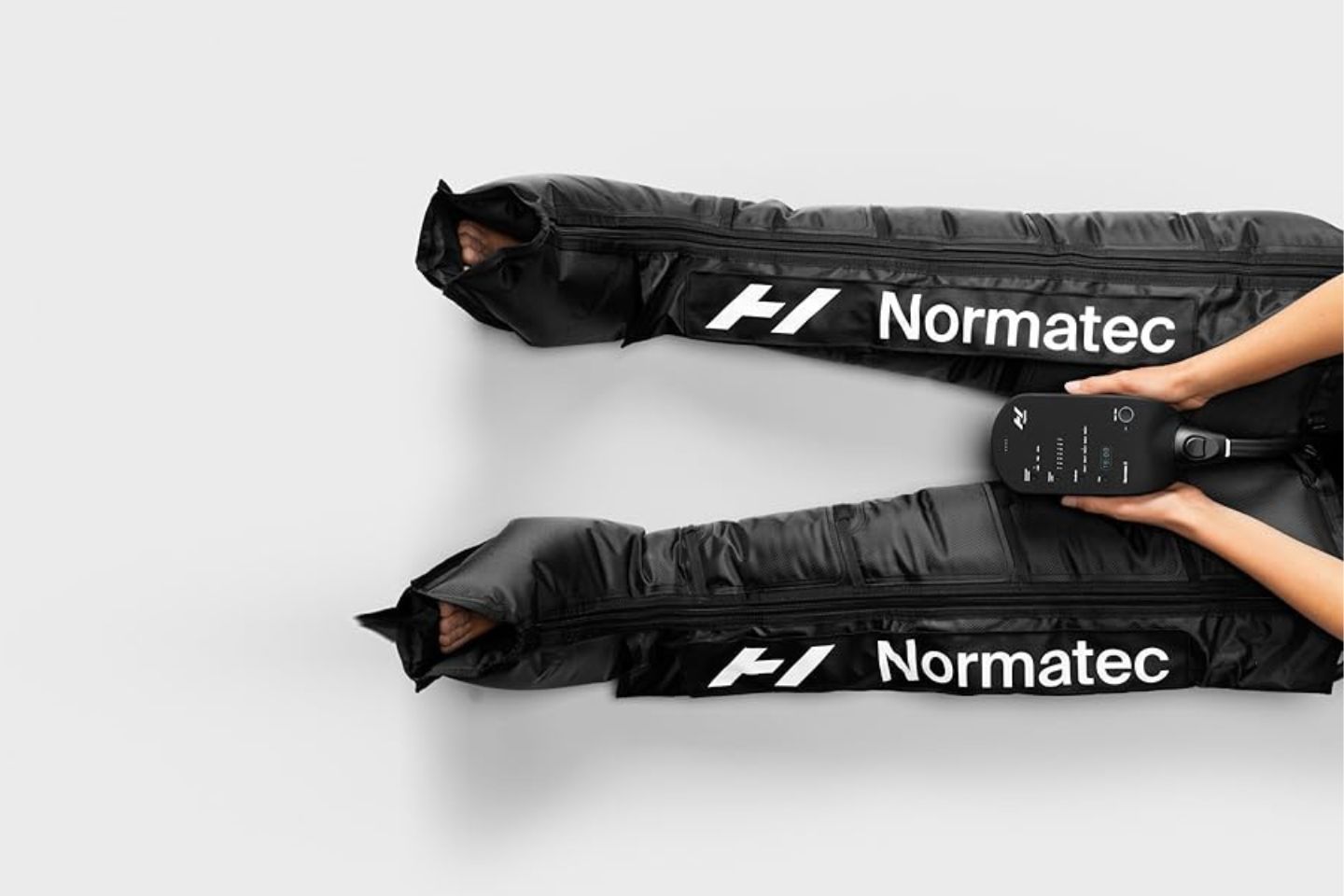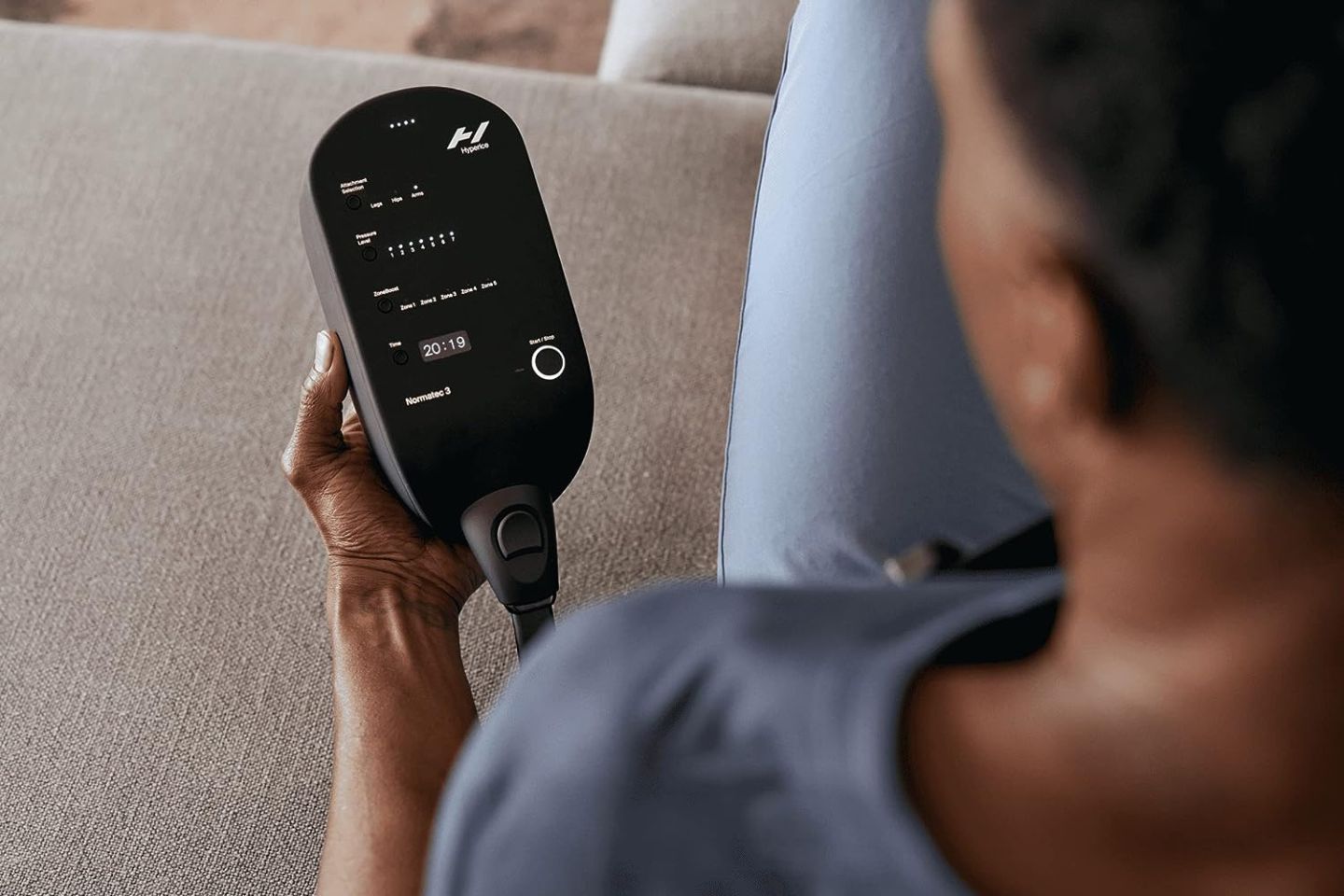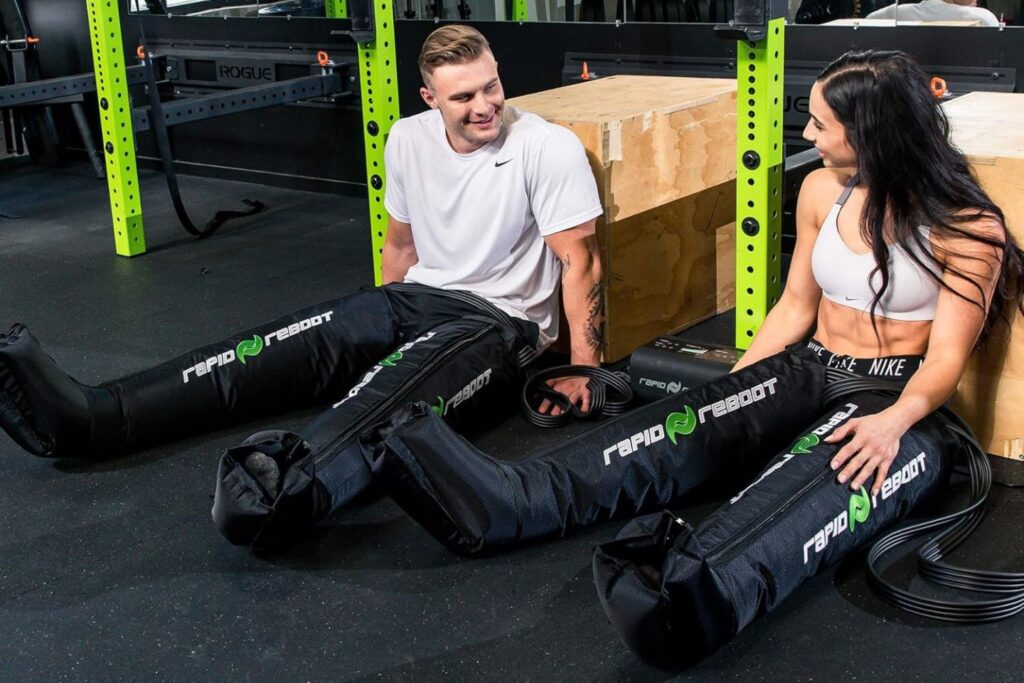Compression boots have become a notable tool for recovery among athletes and those with active lifestyles. As devices that envelop your legs to apply controlled pressure and promote blood circulation, the aim is to speed up recovery and enhance performance. By improving circulation, these boots help flush out lactic acid and reduce muscle soreness after intense physical activity.
The technology behind compression boots is rooted in the medical concept of compression therapy. This method is often prescribed to prevent or manage conditions such as venous insufficiency. When applied to the context of physical recovery, the principles remain consistent. The boots target your lower limbs with varying pressure levels, closely mimicking the muscle contractions that occur naturally within the body. This process helps reduce the potential for inflammation and supports lymphatic drainage, which is crucial for eliminating toxins from muscle tissue.
Moreover, compression boots are not only for those who engage in strenuous workouts. Individuals who experience long periods of sitting or standing may also benefit from their use. This recovery modality offers a convenient way to aid in reducing leg swelling and discomfort from being in a stationary position for extended periods. By integrating compression boots into your recovery routine, you can see a marked improvement in your overall well-being and ability to perform physically.
- Essential Concepts of Compression Therapy
- Types of Compression Boots
- Physiological Effects of Compression
- Improving Circulation and Reducing Swelling
- Sports Recovery and Performance
- Medical Applications
- User Convenience and Comfort
- Research and Studies
- Design and Technology
- Frequently Asked Questions
- Connect with The Personal Injury Center Today!
Essential Concepts of Compression Therapy


Compression therapy revolves around the application of controlled pressure to the limbs. This therapy benefits your body as it enhances venous blood flow, limits edema, and prevents blood pooling.
Key Principles
- Uniform or Gradient Pressure: You might encounter two types of compression: uniform, providing consistent pressure, or gradient, where pressure gradually decreases up the limb.
- Levels of Compression: Based on your condition, you may require different pressure levels, measured in millimeters of mercury (mmHg).
Types of Compression Therapy Devices
- Elastic Stockings: Often worn daily for consistent support.
- Intermittent Pneumatic Compression Devices (Compression Boots): These use an air pump to inflate and deflate, providing restorative pressure cycles periodically.
Potential Benefits
- Circulation Improvement: Improve blood flow, particularly in your lower extremities.
- Preventing Venous Issues: By assisting vein function, you reduce the risk of developing blood clots or deep vein thrombosis.
Remember, the correct fit and proper use of the devices can influence the effectiveness of compression therapy. Consultation with a healthcare provider ensures you receive a tailored therapy plan.
Types of Compression Boots
When you’re looking to purchase compression boots, you’ll find several types available to meet different needs.
- Circulation Boosters: These boots are designed to enhance blood flow, particularly suitable if you are frequently on your feet or sitting for prolonged periods.
- Pneumatic Sequential Compression Devices: Beneficial for athletes, these boots utilize air chambers to apply pressure in sequence, aiding in recovery by mimicking the body’s natural pumping action.
- Vibration Massage Technology: These boots incorporate vibration alongside compression to provide a massage effect, which can be especially relaxing for your muscles.
- Gel Pack Wearables: Often used for cold therapy, these boots can be frozen and worn to help reduce inflammation and swelling.
When choosing the right compression boots, consider the primary use—whether for recovery post-exercise, medical purposes, or simple relaxation. The intensity of the compression, its adjustability, and the inclusion of additional features like heat or cold therapy might influence your decision.
For your convenience, here are a few Amazon products you may consider:
- The Rapid Reboot Recovery System: Offers customizable settings and is highly regarded among serious athletes for its efficiency in reducing recovery time.
- Normatec Pulse 2.0 Leg Recovery System: Favored for its patented pulsing technology, precise pressure control, and usage by professional athletes.
Remember to evaluate your specific needs against the features of each type of boot to select the most fitting option.
Physiological Effects of Compression


When you wear compression boots, you experience various physiological effects that can enhance your recovery process. These specialized garments exert mechanical pressure on the limbs, which has several benefits:
- Increased Blood Flow: The pressure applied can help improve circulation, ensuring that blood returns to your heart efficiently. This may be particularly beneficial post-exercise when your limbs require more oxygen and nutrients for recovery.
- Reduced Swelling and Inflammation: By squeezing the tissue, compression garments restrict the excessive fluid buildup, such as after an injury or during prolonged inactivity.
- Facilitated Waste Removal: The compression aids in flushing out metabolic waste products that accumulate during physical activity. This is similar to how your muscle pump works to remove lactic acid and other byproducts.
- Venous Thromboembolism Prevention: Wearing compression devices can reduce the risk of blood clots, as the constant pressure discourages blood stasis in the veins.
Here is a simple breakdown:
| Benefit | Description |
| Improved Circulation | Enhances oxygen delivery and nutrient supply to muscles. |
| Edema Reduction | Limits fluid buildup, reducing swelling. |
| Metabolic Clearance | Accelerates the removal of waste products from muscle activity. |
| Blood Clot Prevention | Maintains blood flow to prevent clot formation. |
By understanding these effects, you’re taking a step towards optimizing your body’s recovery and performance capabilities.
Improving Circulation and Reducing Swelling
Compression boots are crucial in enhancing your circulation and effectively reducing swelling, known as edema, in your lower limbs.
Enhancing Blood Flow
Compression therapy, a primary function of compression boots, applies controlled pressure to your legs. This process facilitates venous return, which is blood flow back to your heart. By boosting this circulation, compression boots for swelling can help ensure that your tissues receive more oxygen and nutrients, vital for your recovery and overall leg health.
Reducing Edema
The build-up of fluid in your legs and ankles – medically termed as edema – can result in swelling and discomfort. The pressure chambers present in most compression boots squeeze the affected area to promote lymphatic drainage. The benefits of Using Compression Boots include not just alleviating the swelling but also expediting the removal of metabolic waste from the tissues, thereby relieving symptoms and discomfort associated with edema.
Sports Recovery and Performance
Compression boots are a game-changer in your recovery routine and overall performance enhancement tactics. Specifically engineered to reduce recovery time and improve athletic output, these devices could take your performance to the next level.
Accelerating Recovery Times
After rigorous activity, your muscles require time to heal. Compression boots significantly reduce this downtime by enhancing blood flow and circulation. A study in the Journal of Applied Physiology study points out that intermittent pneumatic compression helps recover post-exercise. This process decreases fluid buildup, minimizes inflammation, and speeds up muscle repair. Compression boots systematically apply pressure, facilitating a quicker subsidence of training fatigue and sports injury symptoms.
Boosting Athletic Performance
The benefits of compression boots aren’t restricted to recovery alone. When used consistently as part of a training regimen, they improve overall vascular functions, which can lead to enhanced endurance and better performance. The graduated compression technique mimics the body’s natural muscle contractions, promoting circulation and lymphatic drainage, thereby prepping your muscles for your next training session. Outfitting yourself with a pair of the best compression boots can translate to a competitive edge in your athletic pursuits.
Medical Applications
In the realm of medical treatment, compression boots have proven particularly beneficial for specific conditions requiring improved circulation and fluid management.
Deep Vein Thrombosis Prevention
Deep vein thrombosis (DVT) is a serious condition where a blood clot forms in a vein located deep inside your body. Compression therapy is widely used to prevent this condition; by applying graduated pressure to your legs, these devices enhance venous return, reducing blood stasis and the risk of clot formation.
Lymphedema Management
Compression boots can be a game-changer for managing lymphedema, a condition characterized by swelling due to lymphatic system issues. They help maintain fluid flow, reduce swelling, and prevent lymphatic fluid accumulation in your legs’ tissues. The consistent pressure pushes the lymphatic fluid upwards, favoring its natural drainage pattern and mitigating the effects of the condition.
User Convenience and Comfort


Compression boots offer a blend of technological innovation and personalization, ensuring your recovery routine is convenient and comfortable.
Ease of Use
You’ll find that using compression boots is straightforward, typically involving sliding your legs into the boots and selecting your preferred program. Modern compression boots are designed with user-friendly interfaces, meaning you can get started with just the push of a button.
Adjustable Settings
The comfort you experience with compression boots can be finely tuned thanks to adjustable pressure settings. Whether you prefer a gentle squeeze or more intensive compression, the ability to customize the pressure levels to match your comfort needs ensures sessions are both effective and enjoyable. Some products even provide up to 10 pressure settings, giving you precise control over your recovery experience.
Research and Studies
In this section, you will learn about the solid scientific backing for the use of compression boots, including outcomes observed in clinical settings and specific instances documented through case studies.
Clinical Evidence
Research indicates intermittent pneumatic compression (IPC) boots might increase blood lactate levels during subsequent exercise. This could suggest a potential for these boots to affect your physiology in ways that could be leveraged for training adaptations or recovery. For example, a study involving ten healthy participants showed notable physiological responses when IPC boots were used in between cycling trials Intermittent Pneumatic Compression Boot Use Elevates Blood Lactate During Subsequent Exercise.
Another line of research has expanded from medical applications to sports, examining how compression garments, including boots, can influence performance. Clinical evidence has demonstrated that compression stockings can improve venous return, which is crucial for preventing deep venous thrombosis. This finding underscores the multifaceted benefits extending from medical to athletic contexts Effects of Wearing Compression Stockings on Exercise Performance and Recovery.
Case Studies
In specific scenarios, compression boots have been shown to facilitate recovery by improving muscle oxygenation and reducing the risk of overuse injuries. As detailed in individual reports, athletes have observed performance enhancement and a decrease in symptoms associated with intense training sessions. These boots exert mechanical pressure, positively impacting the body’s physiology during and post-exercise The Science Behind Compression Recovery Boots.
Design and Technology
As you explore the realm of compression boots, you’ll notice a significant emphasis on the innovation of compressive technologies and the use of cutting-edge materials designed to enhance your experience and recovery.
Innovations in Compression Technology
Compression boots have evolved with dynamic air compression systems that operate in a sophisticated sequence. This method, beginning at the foot and moving upward, maximizes circulation and mimics the body’s natural muscle contractions. For example, the Normatec 3 uses a patented pulse technology to precisely manage the inflation of air chambers precisely, ensuring pressure is applied most effectively.
Material Advancements
The materials used in compression boots are not just about durability; they’re about comfort and efficacy. Today’s compression boots are made from high-quality, flexible fabrics that conform to your limbs. The engineering behind these materials is geared towards maintaining consistent pressure while also being breathable to reduce heat build-up during use.
Frequently Asked Questions
In this section, you’ll find targeted answers to common questions about the use and benefits of compression boots, providing clarity on how they may fit into your wellness routine.
What are the pros and cons of using compression boots regularly?
Regular use of compression boots can lead to improved recovery time after exercise by promoting blood flow and reducing muscle soreness. On the downside, overuse without proper guidance might cause discomfort or skin irritation.
Can compression boots improve circulation in the legs?
Yes, compression boots are designed to enhance circulation in your legs. They apply pressure sequentially to different areas, promoting better blood flow and potentially alleviating symptoms of poor circulation.
How does compression therapy benefit athletes during recovery?
For athletes, compression therapy speeds up the recovery process by reducing inflammation and muscle fatigue. This therapy helps flush out lactic acid and provides a faster return to peak performance levels.
Are there any risks associated with using leg compression machines?
While generally safe, there are risks, such as exacerbating pre-existing conditions like deep vein thrombosis. It’s crucial to consult with a healthcare provider before starting treatment with leg compression machines if you have any vascular issues.
Do compression boots have an effect on cellulite reduction?
There is limited evidence to suggest that compression boots have a direct effect on cellulite reduction. The primary focus of these devices is to support recovery and circulation, not to address aesthetic concerns.
What is the appropriate timing and frequency for using compression boots?
The optimal timing and frequency vary by individual needs. Many users find that a 20-30-minute session after intense physical activity or during periods of prolonged immobility can offer benefits. However, it’s best to adhere to the guidelines provided by the manufacturer or your healthcare professional.
Connect with The Personal Injury Center Today!
If you’ve been injured and need compensation, The Personal Injury Center is here to assist you. Our experienced team is dedicated to helping you understand your legal options and obtaining the compensation you deserve. Contact us now to start your journey towards justice and financial recovery.
Disclaimer: Last update on 2024-07-27 / Affiliate links / Images from Amazon Product Advertising API.
This content is provided solely for educational reasons and should not be seen as medical guidance. It’s important to consult with a healthcare expert prior to making any changes to your health regimen, including dietary adjustments or the use of supplements.
Pages on this website may contain affiliate links. As an Amazon Associate, we receive a commission from qualifying purchases. This commission is at no extra cost to you.



